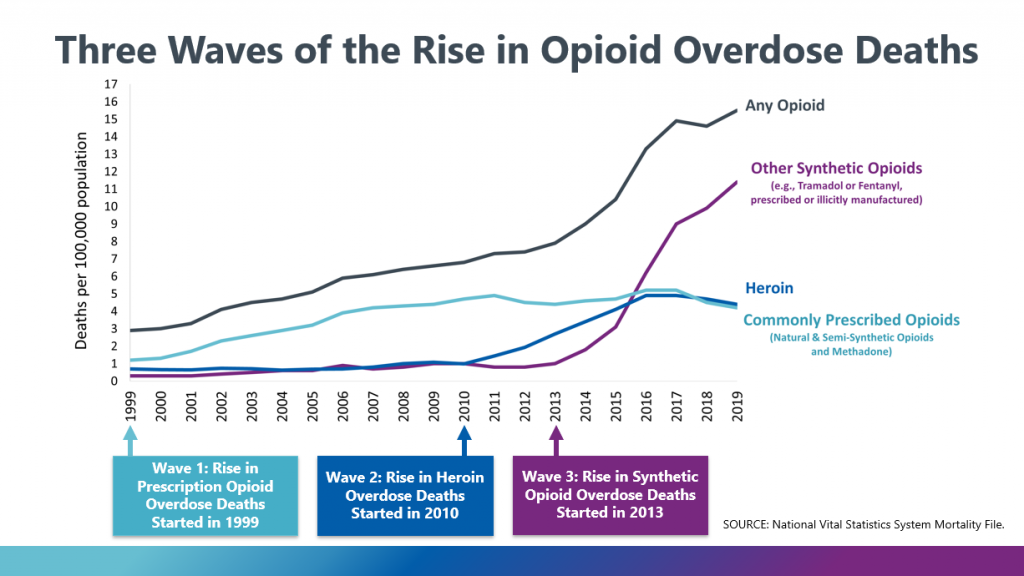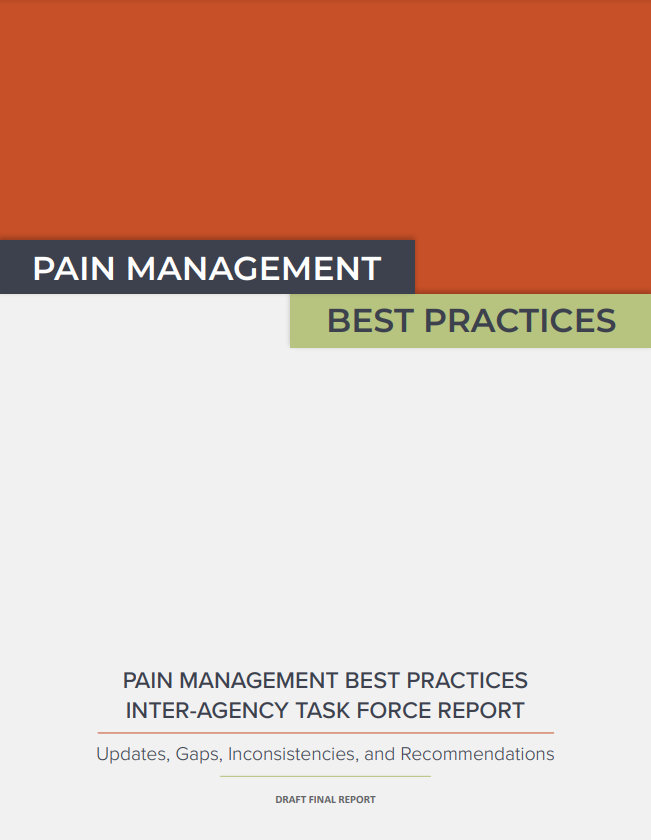Let’s review some of the solutions for chronic back pain. Many people have back pain at some point in their life. Normally it passes after a while. When your pain doesn’t subside within 3 months, it’s called chronic pain. Below a critical review of some solutions for and ideas about chronic back pain.
This article is written by two experts that have suffered years of chronic back pain and have been able to heal themselves in a relatively short amount of time.
What is important to know about pain relief medication for back pain?
What is important to know about pain relief medication for back pain, is that pain medication is not a cure; all it does is masking your pain, it dulls the effect. Pain medication has well-known side effects like drowsiness, dizziness, nausea, constipation, impaired brain function, as well as all those other warnings you find in the fine print on the box. Opioids aggravate the physical problems. Not only do they cause other issues in the body, but they can actually kill you.
Opioids use in the USA
This website shows the figures for the USA:
🔹 > 191 million opioids dispensed in 2017
🔹 1 in 4 patients struggle with addiction
🔹 > 11.5 million reporting misuse in 2016
🔹 between April 2020 and April 2021, in the USA alone and only from opioids, more than 75,000 persons died.

As a result, CDC recommended doctors to only prescribe long-term opioids for terminal patients, like the final stages of cancer. But it looks as if people desperate from pain are now taking refuge in synthetic, sometimes illicitly manufactured opioids, like fentanyl. As a results, the death toll is rising even more steeply.
Ideally, you should only use pain medication for the short term.
Simply refusing to prescribe opioids to desperate patients is not the solution. We need different ways to stop the pain.
What can I do to get pain relief for my back pain?
Here are some options you can apply to get pain relief for back pain:
- Medication (check with your doctor and see above)
- Physical therapy
- Walking, cycling, running
- Chiropractic
- Osteopathy
- Other spinal manipulation therapy
- Acupuncture
- Massage
- Yoga, fitness, Pilates
- Tai Chi, Gi Cong
If it works and gets you out of pain permanently, perfect!
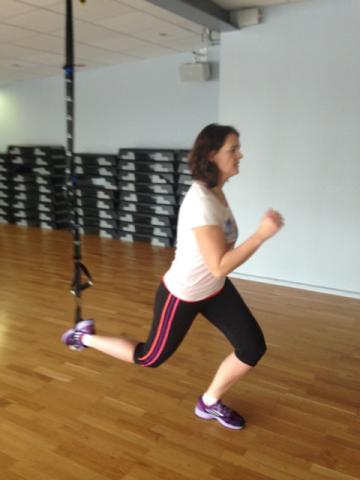
However, whatever chronic sufferers try, most find that it only gives temporary relief, after which it’s back to a harsh reality. Which makes sense; none of these interventions are cures; they relieve symptoms but ignore the cause.
Should I rest or do light physical activity when I have back pain?
When you have back pain you might ask yourself if you should rest or if you can do some light physical activity. One good news is that current advice recommends to continue to move despite the pain. This is excellent advice. If it was really an injury, for example you broke a bone, or sprained an ankle, why would you keep moving? That would just delay the healing.
So this is another clue that your injury is not a physical issue, otherwise the advice would not be to keep moving.
What does my scan or MRI say regarding my back pain?
When doing a critical review of solutions for chronic back pain, it is also important to know more about the interpretation of the scan or MRI. Maybe you had an MRI or scan as part of your diagnosis. Its main function is to rule out serious underlying, possibly even life-threatening, conditions, like bone cancer.
Interpreting the results of a scan is not easy! You probably heard a lot of technical terminology explaining it.
Most of the time, a scan is interpreted as showing a ‘defect’ in your back. It might feel good to hear this: you’re not imagining it, you have an official diagnosis and it’s known to hurt like hell.
On this page, some research studies can be found on what scans actually say.
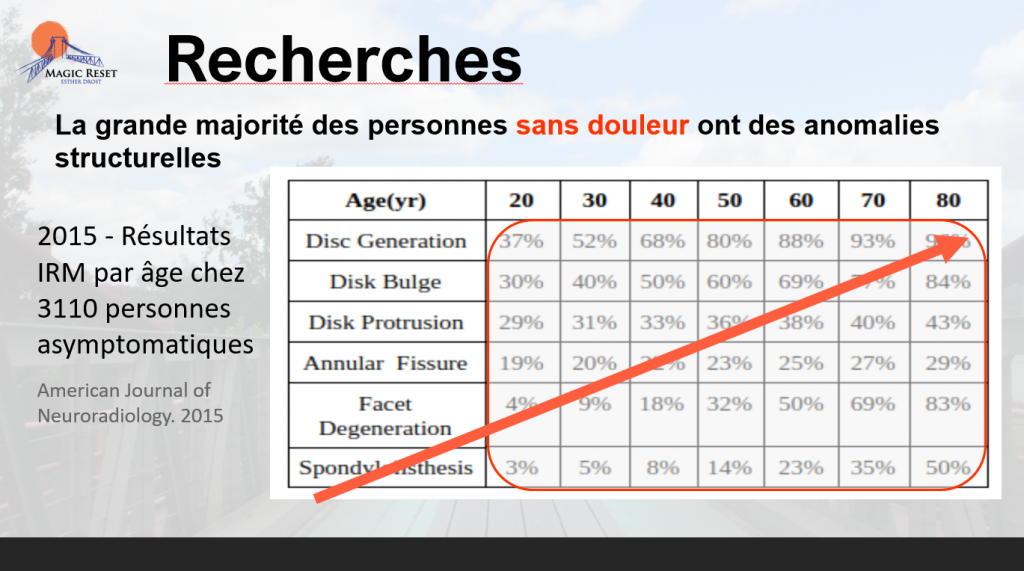
You soon discover that this diagnosis does not bring you one step closer to a cure. It’s just a label. Moreover, the doctor probably did not tell you that many pain-free persons have the same ‘defect’ as you do. A bulging disc or herniated disc might be just a sign of ageing; plenty of people go happily through life having it, usually without even knowing it.
👉 Most scans show some kind of spinal abnormality
👉 Spinal ‘defects’ seem to increase with age
👉 The place and interpretation of scans matter
It would go too far to go into all kinds of studies. What becomes clear is that in most cases, an abnormality of the spine cannot be the cause of pain.
So an abnormality in the spine cannot be the cause of pain.
If your body is not ‘broken’, there is no need to work on your spine and discs. If something else is causing the pain, it opens the possibility to banish chronic pain differently and naturally.
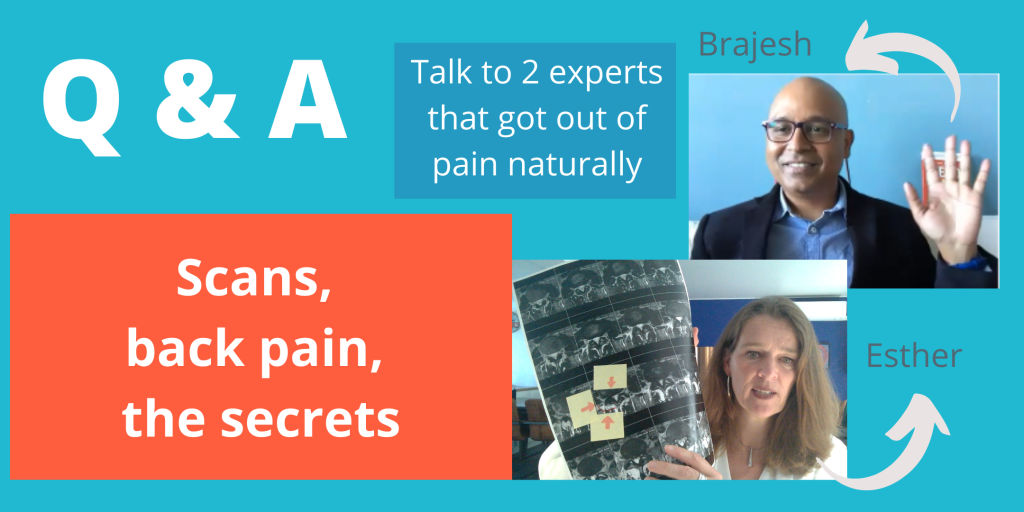
Should I get an operation for my back pain? Risks and benefits
Another element of critical review of solutions for chronic back pain, is to assess the risks and benefits for an operation on your back.
In despair, many persons with chronic back pain turn to their doctor and request steroid injections into the discs, only to learn – if their doctor is bona fide – that these are no longer recommended for most persistent pain syndromes. Even surgery is generally discouraged, unless some very specific criteria are met. It is a risky procedure that almost never brings lasting relief. Often, the effects diminish over time.
According to the National Institutes of Health, the rate of success of back surgery is 35%. There are people that have had back operations and about a year or so later their pain returns. Some people have had multiple surgeries.
Surgeons are probably the most trained experts on the planet. The success of regular non-back surgeries is over 90%. How can they get it wrong for the back interventions?
They don’t get it wrong. They do exactly what they set out to do. The only problem is that they are treating the wrong cause for the pain.
Placebo knee operation
An interesting landmark study was done in 2002 on knee operations on osteoarthritis. A total of 180 patients were selected and some received a placebo ‘operation’. Result of the study: all people reported pain relief and the placebo group reported even slightly better.

Does stress contribute to back pain?
In a critical review of solutions for chronic back pain, another element should be included: stress. Everybody knows that stress increases back pain. We all have busy lives and we face many challenges in this fast-paced world. You have deadlines to meet, take care of your children, work out for your health.
What few know is that stress is often the cause of pain.
Ask a person who is suffering chronic back pain the question: ‘What started your pain?’
It will often be something like; ‘I made a wrong movement and heard a snap in my back’. Or something about an old injury that hasn’t healed correctly.
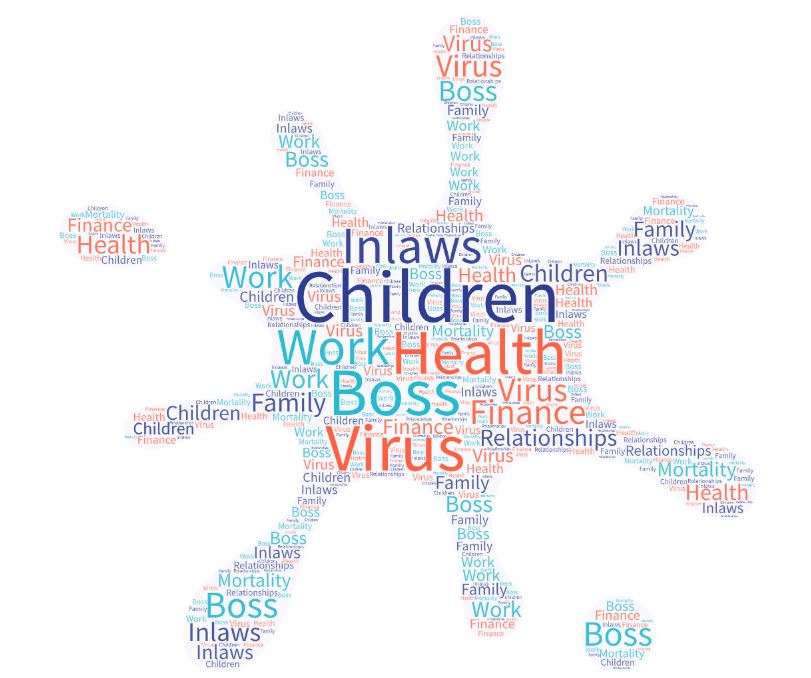
It made their back go into a spasm or a freeze. If you then continue asking that person ‘What was going on in your life at that time?’, you usually hear a story of stress. We all go through rough times in our life and many people that suffer from chronic back pain find that it started in such a time. They might have been mourning a loved one, been traumatized through something terrible or been suffering from financial insecurity.
Just think about the expression ‘Get off my back’!
Stress is just a physical manifestation of emotions. Some emotions are uncomfortable to feel, so your brain repressed them. It’s a habit that has been created that you’re often unaware of. It’s not your fault.
So the question remains: what is really causing my chronic back pain?
What is really causing my chronic back pain?
When critically reviewing options for back pain relief, it becomes clear that the real cause of chronic back pain is a riddle for most doctors. That’s why there are so many people in pain worldwide. In the USA it is estimated that 1 out of 2 adults suffer chronic pain. In Europe it is slightly better; 1 in 4 have continuing pain. For years all kinds of body work techniques have been applied. Did this diminish the amount of people suffering? No, it didn’t.
There are some doctors that practice mind-body medicine and there might be a real key in there. Pain as a diversion from stress, tension and repressed emotions; in short Diversion Pain Syndrome.
What is Diversion Pain Syndrome?
Diversion Pain Syndrome, named by Adam Heller, is a defense mechanism of your brain.
Yes, your brain has a function to protect you. For both physical as well as emotional danger. In case of physical danger, you will flee, fight or freeze. But the brain also has a protective function for emotional danger.
Emotional danger can be anything that will remind you of what hurt you, or of unpleasant events or situations from the past or present. Your brain creates a diversion mechanism to give you physical pain in order to prevent you from feeling emotional pain.
Result: You are repressing your emotions.

Smart brain, but not really helpful.
It is very natural to bury uncomfortable emotions. These are emotions that we “should not” feel or that we think our friends and families will not accept, understand or appreciate.
The emotions that are being repressed are considered ‘dangerous’ by the brain as they will remind you of what hurt you. In most instances, we are not aware that we are even repressing these emotions. It’s as if they don’t exist.
And no worries, the pain is not ‘in your head’. The pain is real and debilitating for the individual suffering from it. It starts in the brain, diverts your attention away from uncomfortable emotions and leads to physical changes in the body, which lead to real physical pain, tingling, burning, numbness and/or weakness.
Know that this is a process that you can unlearn and replace with something more useful.
Pain management – Best Practises Report from Dept of Health & Human Services USA
In May 2019, the US Department of Health and Human Services (HHS) published a report on pain management best practices. The report contains 114 pages; the main area of attention is the biopsychosocial approach of care.
Bio: how the body reacts physically due to the Psycho and Social situation
Psycho: the individual and their thoughts, feelings, beliefs
Social: the social environment of the individual in which he/she lives.
One of the recommendations in the report is about “Emotional Awareness and Expression” programs as an alternative to opioids for chronic pain.
This is a great tip as many of the chronic pain sufferers have definitely a good part of stress in their lives.
Want to talk to 2 experts that have suffered chronic back pain?
When critically reviewing solutions for chronic back pain, it can be very beneficial to talk to 2 experts that have suffered chronic pain for years and that are now pain free. You can learn from their experience and skip the errors they made to make sure you find your pain free solution faster than they did.
Esther and Brajesh do weekly Q & A calls for chronic back pain sufferers. Sign up and spend 30mins of your time to get some hints and tips and listen to their story.
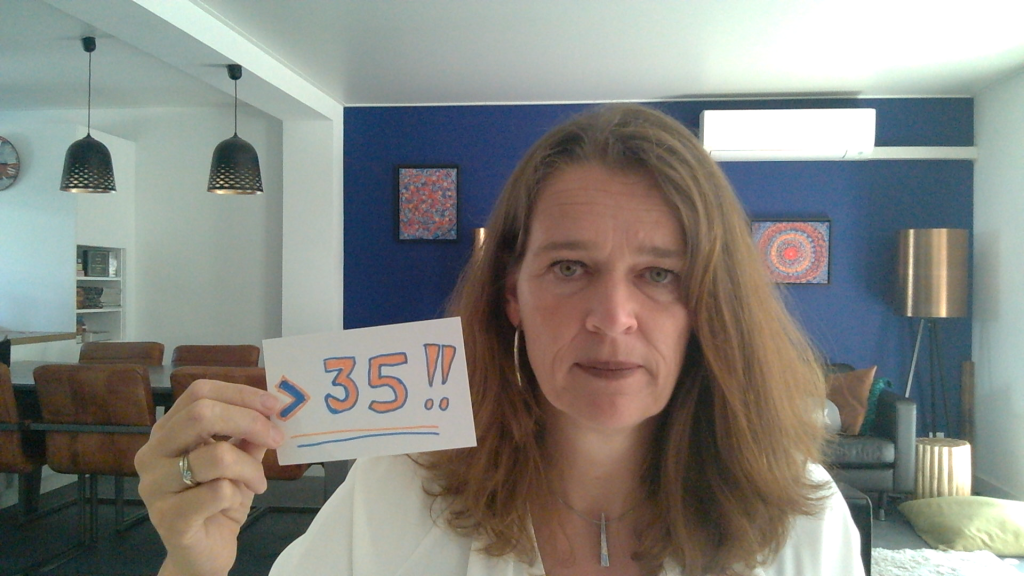
About Esther: Dutch from origin, living in France.Has suffered 6 years of chronic pain in back, shoulder, leg, knee and under her foot. She could stand or move for about 15 minutes and then the stabbing pain would come up.
She tried over 35 different methods to get pain relief.
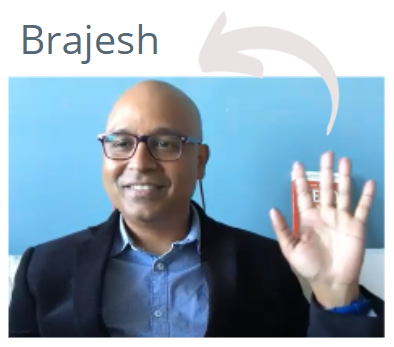
About Brajesh: He is an engineer focused on solutions.He suffered 8 years of chronic back pain. He couldn’t even carry a gallon of milk. He approached back pain as an engineering problem and found too many inconsistencies.
This opened his mind to the cause of the pain not being a structural issue and he was able to heal himself in a matter of weeks.

